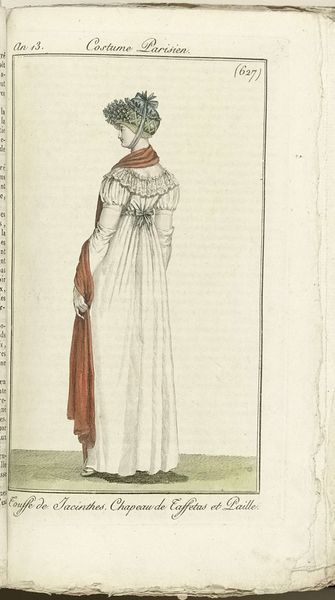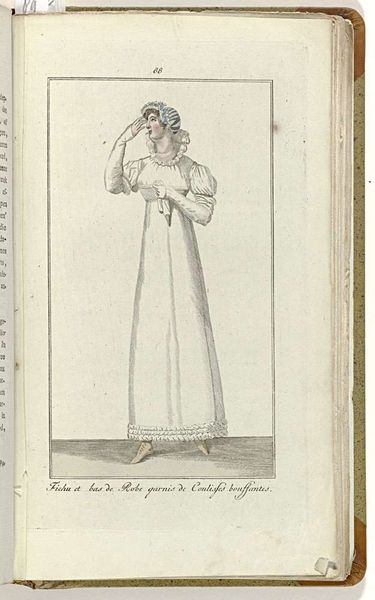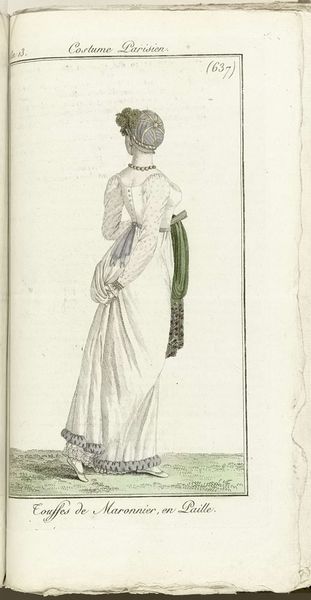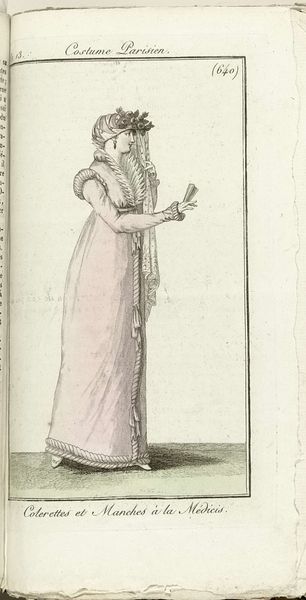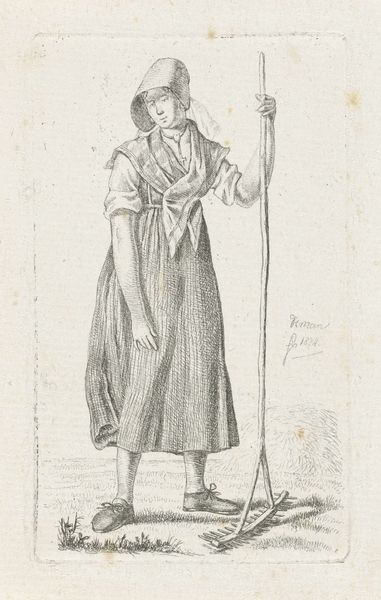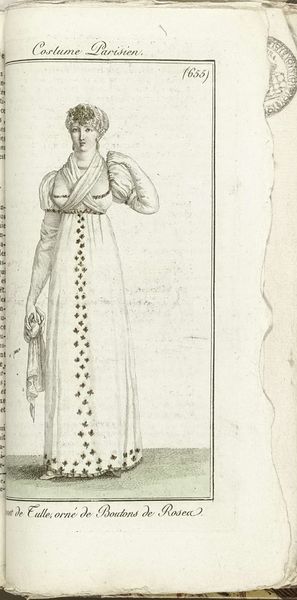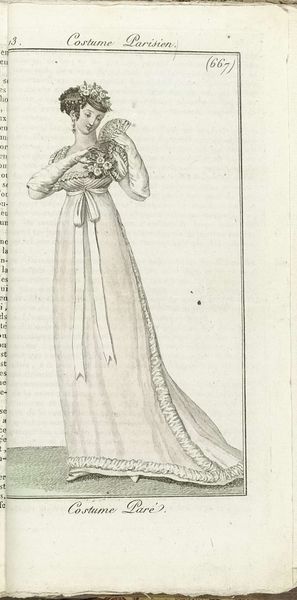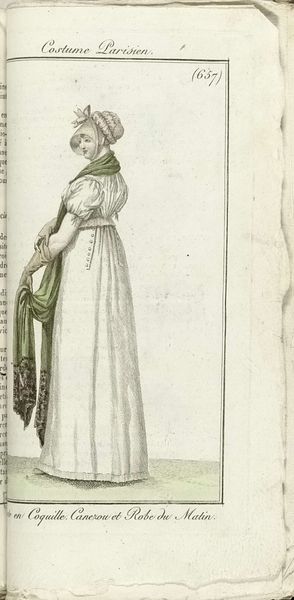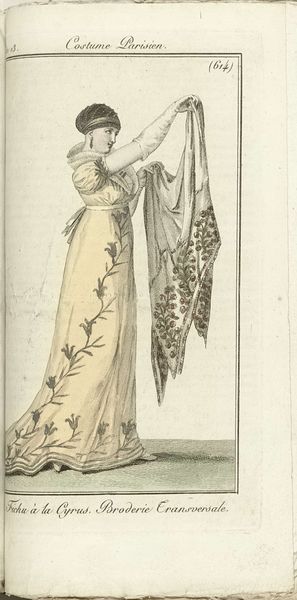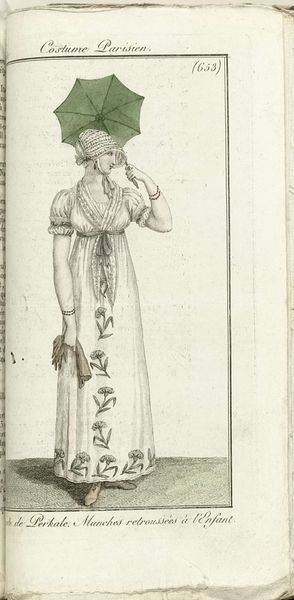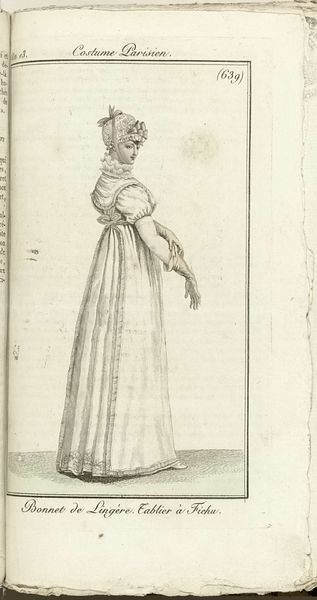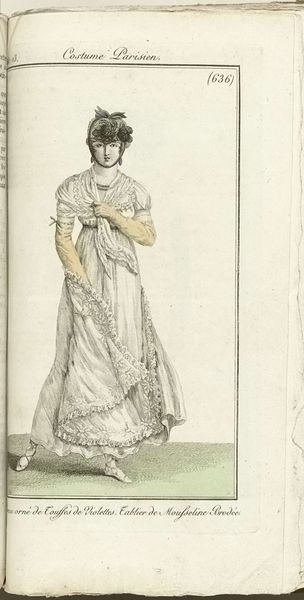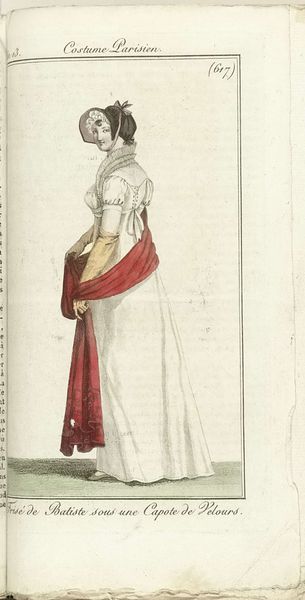
Journal des Dames et des Modes, Costume Parisien, 1805, An 13 (613) Chapeau de Velours... 1805
0:00
0:00
print, engraving
#
portrait
# print
#
figuration
#
romanticism
#
decorative-art
#
engraving
Dimensions: height 181 mm, width 112 mm
Copyright: Rijks Museum: Open Domain
Curator: Here at the Rijksmuseum, we have on display a fascinating print titled "Journal des Dames et des Modes, Costume Parisien, 1805, An 13 (613) Chapeau de Velours..." It's from 1805 and attributed to Horace Vernet. Editor: It strikes me as quite elegant. A slender woman, beautifully attired in what seems to be an outfit perfect for a sophisticated outing. The soft colors evoke a sense of refinement. Curator: Indeed. These prints, popular at the time, played a crucial role in disseminating the latest Parisian fashion trends across Europe. The Journal des Dames et des Modes became a powerful vehicle for cultural influence. Editor: That hat… the velvet cap…It signifies more than just style. The shape, the material, its color; it represents the dawn of the Empire silhouette and the rising Napoleonic star, but also speaks of modesty and internalized codes of comportment. It's a small visual compendium of feminine virtue, within the context of emerging Bourgeois conventions. Curator: Absolutely. The print offers us insight into the sartorial expectations of women in a particular socio-economic sphere. The detailed description included with the title, naming the materials of her garments such as the "chapeau de velours" and "fichu de satin" speaks volumes about the status that fabrics held within society. Editor: The dark fur trim and bright-white dress make a powerful contrast. We see purity offset against sensuality, which hints at the inner conflicts perhaps emerging within women in the early 19th century. Were they to prioritize appearances or passion? This fashionable image holds a question mark around female identities. Curator: The circulation of these journals impacted commerce and artistic practice. Workshops creating prints would need trained draftsmen and printmakers. They shaped consumer desires and fueled the garment trade. It is crucial to view art such as this as important economic artifacts. Editor: Well, I see the visual code embedded in every texture and subtle tilt of her head—a continuing lineage of beauty, which in turn offers keys to understanding human behavior. This piece provides insight that surpasses economic circumstance. Curator: I concur on the symbolic dimension, but maintain these images and others like them changed social dynamics, influenced the global economy, and encouraged aspiration, making their legacy far-reaching. Editor: Thank you, it’s a wonderful conversation, the layering of meanings both symbolic and sociological enrich our appreciation of the cultural object before us.
Comments
No comments
Be the first to comment and join the conversation on the ultimate creative platform.
